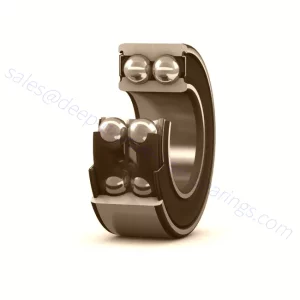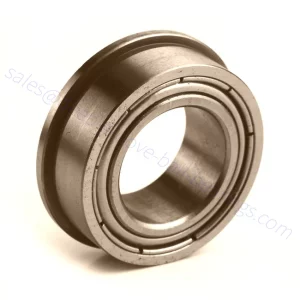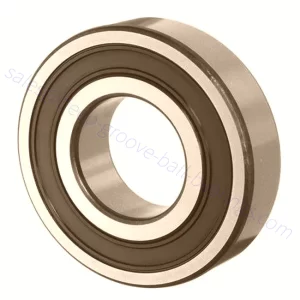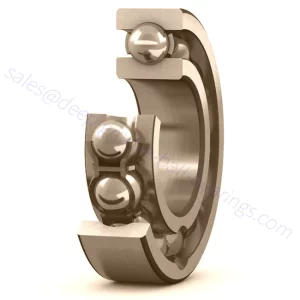Deep Groove Ball Bearings
Thin Section Deep Groove Ball Bearing
Deep groove ball bearings are one of the most common type of rolling bearings. The basic deep groove ball bearing consists of an outer ring, an inner ring, a set of steel balls and a set of cages.Deep groove ball bearing has a wide range of sizes and with simple structure, standardized machining process, reliability, durability and high-cost performance. Deep groove ball bearings can bear axial load in both radial and light axial directions and are easy to install at low maintenance costs.They have low friction torque and are optimized for low vibration and low noise, which are suitable for high-speed operation.
Applications: electric motors and generators, agriculture, material transportation, industrial gearboxes, food and beverage, industrial pumps, industrial fans, vehicles, etc.
As one of the leading deep groove ball bearings manufacturers, suppliers, and exporters of mechanical products, We offer deep groove ball bearings and many other products. Please get in touch with us for details.
Mail:[email protected]
Thin section deep groove ball bearings are the most commonly used rolling bearings. They are simple in structure and easy to use. They mainly bear radial load. When the radial clearance of the bearing is increased, it has a specific performance of angular contact ball bearings and can withstand diameters. The combined burden of direction and axial direction can also be used to bear the pure axial load when the speed is high, and thrust bearing is not suitable.
Basic:
Type: open, sealed(2RS), metal shield(ZZ)
Ring material: Gcr15, stainless steel 440C, Ceramic, and so on
Cage material: steel, brass, entity brass, nylon, and so on
Ball material: Gcr15, stainless steel, Ceramic
Precision: P0, P6, P5, P4, P2
Lubricant: Shell Alvania RL3, Chevron sri2, Mobil EM, Multemp SRL
Internal fit up C0, C1, C2, C3
Installation Practices
Standard bearing installation practices can be used in conjunction with thin-section bearings. The inner and outer rings can be pushed into place on the housing and shaft. Installation should only be performed in a clean, contamination-free area as thin-section bearings lack seals, and grit or other contaminants could get into the bearings and disrupt their performance.
Measurement and Inspection
Due to these bearings’ large diameters and thin sections, it is necessary to address measurement and inspection. Special procedures must be followed to accurately measure the bore diameter and the outside diameter of these thin section bearings. Special gages allow three to five measurements around the circumference of the diameter. These measurements are then averaged to determine the accurate size of the bearing in the unmounted free state. This procedure allows for inherent out-of-roundness.
Features:
- Save weight
- Create Space
- Design Flexibility
- Good running accuracy
- Low noise and smooth and long-lasting operation
- Low friction and good rotation
- High stiffness and low torque
Applications
Thin-section ball bearings are generally used in space, weight, and load constraints applications. Some typical applications for standard thin-section ball bearings include:
-
Machine tools
-
Medical equipment
-
Packaging and textile machinery
-
Satellite systems
-
Radar and satellite equipment
-
Material handling equipment
-
Aerospace, optical, and manufacturing equipment




